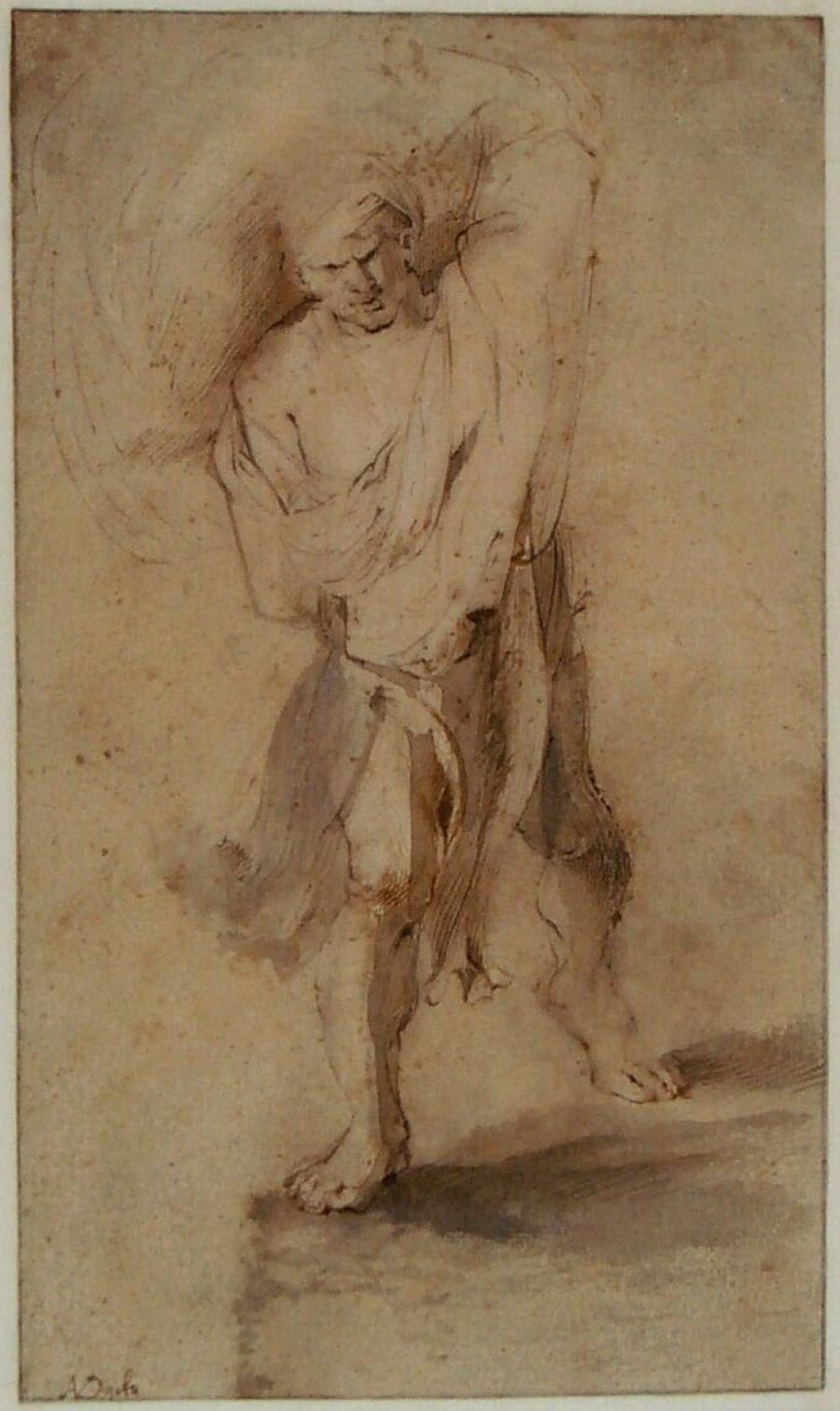Specifications
| Title | Walking Man |
|---|---|
| Material and technique | Pen and brown ink, brown and grey (later?) wash |
| Object type |
Drawing
> Two-dimensional object
> Art object
|
| Location | This object is in storage |
| Dimensions |
Height 183 mm Width 107 mm |
|---|---|
| Artists |
School of:
Anthonie van Dijck
|
| Accession number | MB 5019 (PK) |
| Credits | From the estate of F.J.O. Boijmans, 1847 |
| Department | Drawings & Prints |
| Acquisition date | 1847 |
| Creation date | in circa 1615-1620 |
| Collector | Collector / F.J.O. Boijmans |
| Internal exhibitions |
Rubens, Jordaens, Van Dyck en tijdgenoten (2001) |
| Material | |
| Object | |
| Technique |
Brown wash
> Washing
> Wash
> Drawing technique
> Technique
> Material and technique
Grey wash
> Washing
> Wash
> Drawing technique
> Technique
> Material and technique
|
| Geographical origin | Southern Netherlands > The Netherlands > Western Europe > Europe |
























